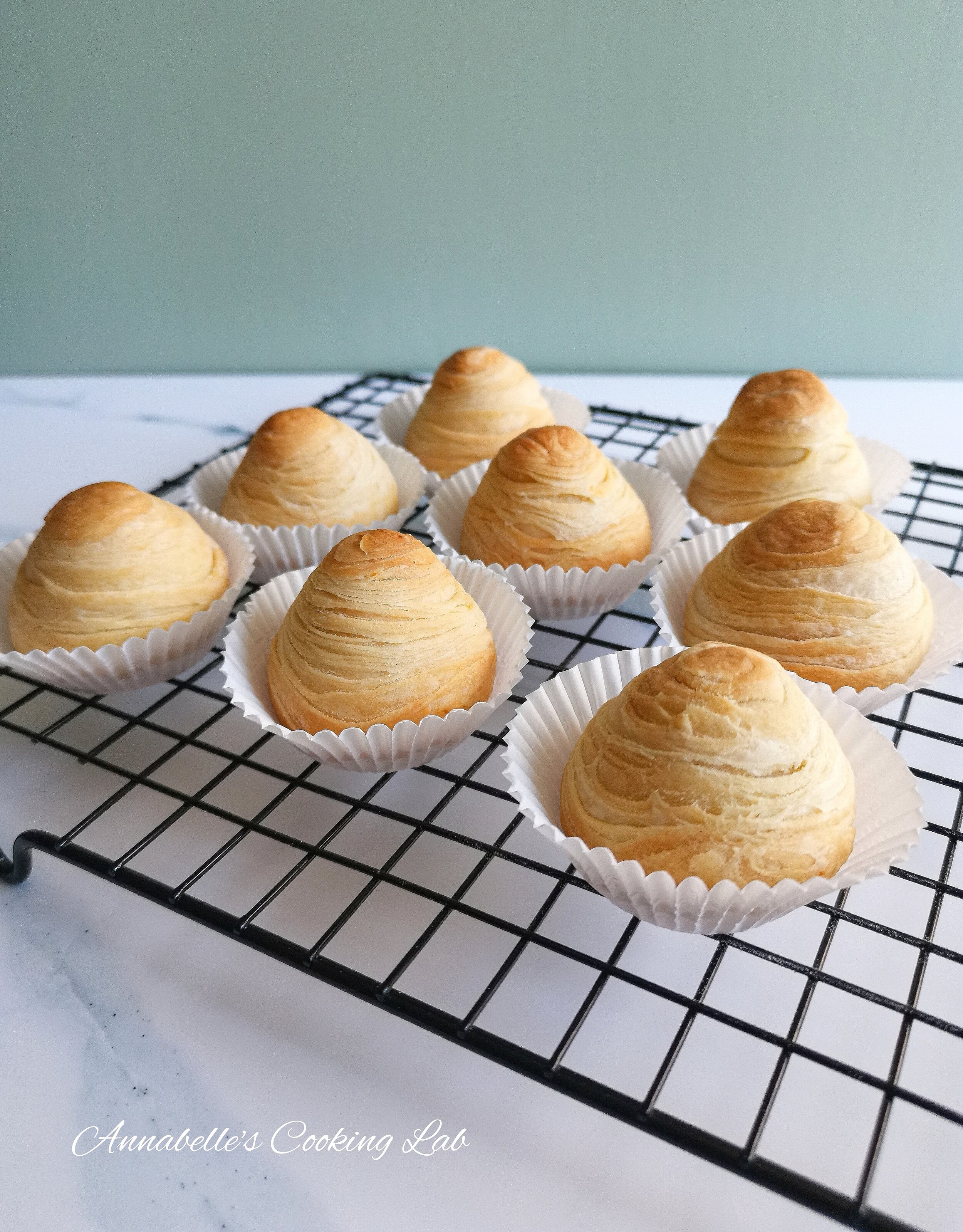Durian Pastries (榴莲酥)
榴莲酥, roughly “durian pastries,” are perhaps my favorite Chinese baked good. The earliest memories I have of summers in China are infused with the intoxicating smell of durian. Despite its smell, which has been described as “rotting trash,” durian has a cloud-like texture and sweet, banana-ish flavor. When the fluffy paste is encased in flaky pastry, you have yourself an explosive experience. Thus, whether baked or lightly fried, these buttery pastries are truly the pinnacle of any meal out or Dim Sum. I switched up the appearance of these pastries for a pinecone spiral instead of the classic barrel shape. Either way, these flavors took me right back to bakeries in China that I frequented with grandparents.
On more practical notes, durian pastry is relatively straightforward to make despite its luxurious look and taste. Because durian is imported from across the globe, it can be pricey in the US, but some Asian groceries sell frozen hunks individually at a cheaper price (and offers less of a commitment if you decide a whole durian is too much of a stink bomb for your kitchen). Traditional recipes I researched call for lard, but lard was quite difficult to access, so I opted for the next best option: European butter. At 82% buttermilk fat, European butter provides a higher fat content than American butter.
Ingredients:
Filling:
4 fresh/frozen hunks of durian
30g sugar
Water Dough:
200g all purpose flour
20g granulated sugar
100g lukewarm water (85-90º F)
65g salted European butter, softened at room temperature
Oil Dough:
150g all purpose flour
110g salted European butter, softened at room temperature
Steps:
Make the filling. In a saucepan, cook down the durian and sugar to release excess moisture. Transfer to bowl and let cool to room temperature.
Make the water dough. Mix all water dough ingredients and knead until a smooth, elastic surface forms. Cover with plastic wrap and let rest for 1 hour.
Make oil dough. Mix all oil dough ingredients until fully incorporated. Cover with plastic wrap and also let rest for 1 hour.
Line a baking sheet with parchment paper.
Divide both water dough and oil dough into 10 equal portions and roll into 20 balls — 10 balls from each dough.
Roll out one water dough ball into a circle the size of your palm (approx. 4 inches in diameter) and encase one oil dough ball, pinching tightly to seal the opening. Use a rolling pin to flatten the dough into a very thin, rectangular/oval sheet about 8 inches in length, 4 inches in width. With the shorter side facing you, tightly roll the sheet into a log. With the short end of the log facing you, roll and flatten the log once more into an even thinner, rectangular sheet of 10-12 inches in length and 3-4 inches in width. Roll tightly into a log once more. Cut right down the middle of the log.
Taking one half of the log, place the cut side up and use your palm to flatten the cylinder from the center, until you get a circle of about 2-3 inches in diameter. With a rolling pin, flatten only the outer rim of the circle (leave the center untouched) until the outer rim is thin and translucent. The entire circle should now be around 4 inches in diameter.
Flip the circle upside down (so the conical center is facing your palm). Encase 1 1/2 tsp of filling. Flip upright and it should form a rounded, pinecone shape. Stick in fridge to chill while making the rest.
Preheat oven to 350º F.
Repeat steps 5-7 for the remaining balls.
Bake for 30 minutes.
Remove from oven and let cool to room temperature before serving.

